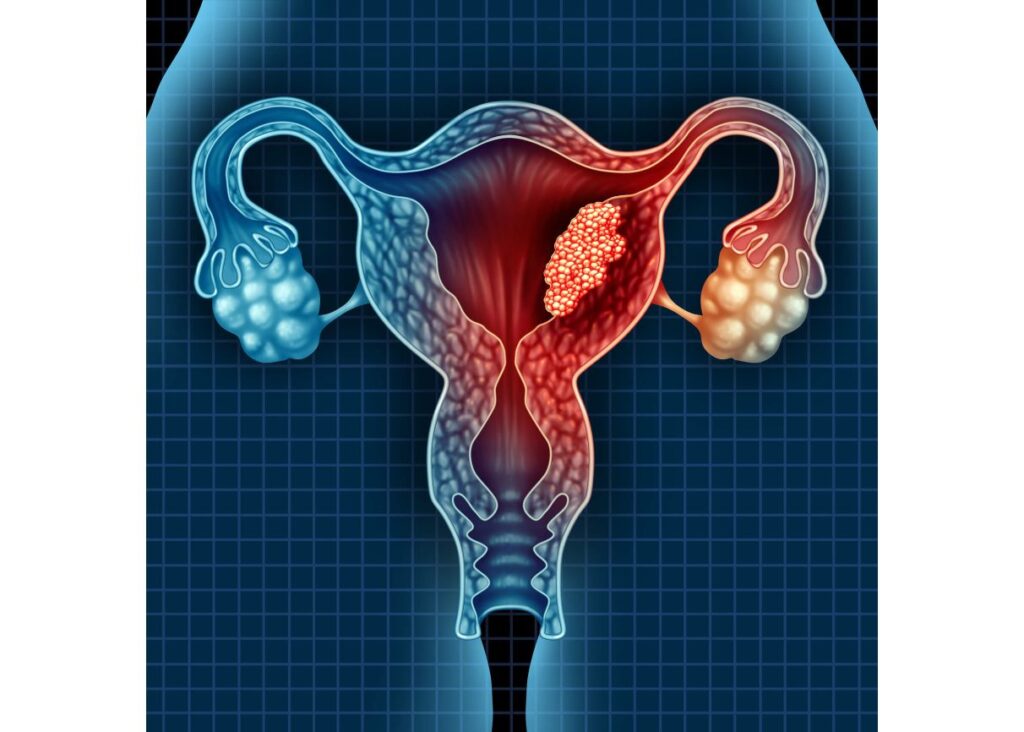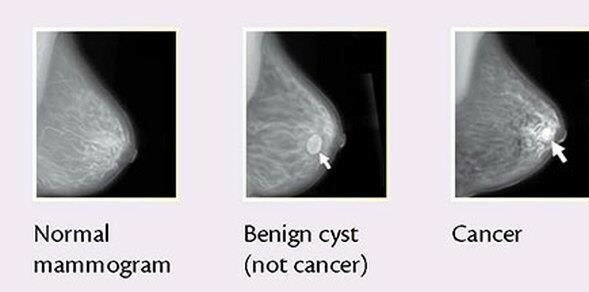
Table of Contents
ToggleBreast Cancer
Breast cancer occurs when cells in the breast grow and divide uncontrollably, forming a mass of tissue known as a tumour.
Breast cancer can invade nearby tissues and travel to other body parts, forming new tumours, a process called metastasis.
Clinical Manifestations
Early Signs of Breast Cancer
- Asymptomatic: Sometimes, breast cancer shows no symptoms at all, especially in the early stages. This means you might not notice anything unusual.
- Size and Shape Changes: A noticeable change in the size or shape of the breast.
- Lump: A mass or lump that may be as small as a pea.
- Persistent Lump or Thickening: A lump or thickening in or near the breast or underarm that persists through the menstrual cycle.
- Skin Changes: Dimpling, wrinkling, scaliness, or inflammation of the skin on the breast or nipple.
- Redness: Redness of the skin on the breast or nipple.
- Distinct Area: An area distinctly different from other areas on either breast.
- Nipple Discharge: Blood-stained or clear fluid discharge from the nipple.
Others;
- Unilateral nipple discharge: When fluid, which could be clear, bloody, or another color, leaks from only one nipple.
- Change in breast size: One breast might become noticeably larger or smaller than the other, or there could be a change in the overall size of the breast.
- Nipple or skin retraction: The nipple may become inverted or pulled inward, or there may be dimpling or puckering of the skin on the breast.
- Local lymphadenopathy: Swollen or enlarged lymph nodes in the armpit or collarbone area, indicating possible spread of cancer.
- Skin changes-orange-like appearance (Peau d’orange): The skin on the breast might take on an orange peel-like appearance, due to changes caused by cancer cells blocking lymph vessels.
- Nipple or skin ulceration: Sores or ulcers on the breast or nipple that do not heal or go away.
- Breast pain: Persistent or unusual pain in the breast, although breast cancer does not cause pain in its early stages.
- Symptoms of metastasis: If the cancer has spread to other parts of the body, symptoms may include bone pain, shortness of breath, jaundice, or neurological symptoms like headaches or seizures.
Risk Factors
- Age: Being 55 or older increases the risk of breast cancer.
- Sex: Women are much more likely to develop breast cancer than men.
- Family History and Genetics: A family history of breast cancer increases the risk especially if close relatives like mother, sister, or daughter have had it. About 5% to 10% of breast cancers are due to inherited abnormal genes like the BRCA1 and BRCA2 genes.
- Smoking: Tobacco use is linked to many cancers, including breast cancer.
- Alcohol Use: Drinking alcohol increases the risk of certain types of breast cancer.
- Obesity: Obesity increases the risk of breast cancer and recurrence.
- Radiation Exposure: Prior radiation therapy, especially to the head, neck, or chest, increases risk.
- Early onset menarche: Starting menstruation at a young age, usually before age 12.
- Late menopause: Continuing menstruation later in life, usually after age 55.
- Delayed first pregnancy (after 30 years of age): Not becoming pregnant for the first time until after the age of 30.
- Null parity: Never having given birth to a child.
- Family history (maternal or paternal) BRCA1 and BRCA2 genes: A family history of breast cancer,
- History of breast biopsy: Previous biopsies or other breast procedures may indicate increased risk.
- Use of Hormonal therapy for more than 4 years: Long-term use of hormone replacement therapy (HRT), which involves taking oestrogen and progesterone to relieve symptoms of menopause.
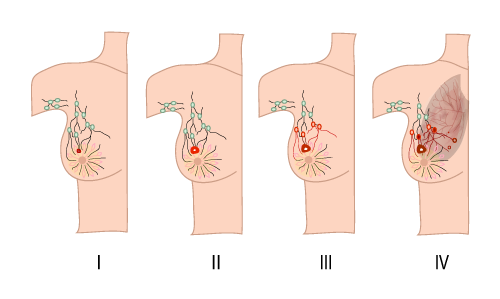
Stages of Breast Cancer
Staging helps describe the extent of cancer by determining the size, location, and spread of the tumour.
- Stage 0: Non-invasive; cancer has not broken out of the breast ducts.
- Stage I: Cancer cells have spread to nearby breast tissue.
- Stage II: Tumour is smaller than 2 cm and has spread to underarm lymph nodes or is larger than 5 cm without spreading to underarm lymph nodes.
- Stage III: Cancer has spread beyond the breast to nearby tissues and lymph nodes but not to distant organs (locally advanced breast cancer).
- Stage IV: Cancer has spread to distant organs such as bones, liver, lungs, or brain (metastatic breast cancer).
Diagnosis/Investigations:
- History Taking: About family history of breast cancer,medical history, and any other symptoms.
- Self Breast Examination and Breast Examination: For any lumps, changes in size or shape, or other abnormalities.
- Mammogram: Special X-ray of the breasts that can detect changes or abnormal growths, even before they can be felt. It’s a common screening tool for breast cancer.
- Ultrasonography: Also known as ultrasound, Uses sound waves to create images of breast tissues. It helps in diagnosing lumps or other abnormalities found during a physical examination or mammogram.
- Positron Emission Tomography (PET) Scan: This test uses special dyes to highlight areas of the body with abnormal metabolic activity, which can indicate the presence of cancer cells.
- Magnetic Resonance Imaging (MRI): MRI uses magnets and radio waves to produce detailed images of breast structures. It’s especially useful for evaluating the extent of the disease in the breast.
- TNM System: This is a staging system used to describe the extent of the cancer based on the size of the tumour (T), whether it has spread to nearby lymph nodes (N), and whether it has metastasized to other parts of the body (M).
- Full Blood Count: This blood test helps assess the overall health and can indicate if there are any abnormalities or signs of infection or inflammation.
- Renal and Hepatic Profile: Blood tests to assess the function of the kidneys and liver, as metastatic breast cancer can spread to these organs.
- Chest X-Ray: This test may be done to check for any signs of metastasis to the lungs.
- Biopsy (Preferably Fine Needle Aspiration): A biopsy is the definitive way to diagnose breast cancer by analyzing a sample of breast tissue under a microscope. Fine needle aspiration is a less invasive biopsy method often used for initial diagnosis.
Management of breast Cancer
Management depends on the tumour’s location and size, lab test results, and whether the cancer has spread.
Stage 0 (Cancer in situ):
- Young Women: Conservative surgery only, such as lumpectomy.
- Advanced Age: Mastectomy only.
Early Stage (Stage I and II):
- Surgery: Modified radical mastectomy and lymphadenectomy for advanced age, and simple mastectomy or wide local lumpectomy for young age.
- Hormonal Therapy: Tamoxifen 20 mg orally daily for 5 years, but may cause retinal damage. Blocks hormones that fuel certain cancers.
- Chemotherapy:
Cyclophosphamide: 30 mg/kg IV single dose.
Fluorouracil: 300-1000 mg/m2 IV, given every 4 weeks based on patient response.
Paclitaxel: 6mg/ml in combination with Cisplatin 1mg/ml.
Late Cancer (Stage III and IV):
- Hormonal Therapy: Same as for early stage, Tamoxifen 20mg orally daily for 5 years, but may cause retinal damage.
- Chemotherapy: same as for early stage.
- Radiation Therapy: Uses high-energy rays to kill cancer cells.
- Immunotherapy: Helps the immune system fight cancer.
- Targeted Drug Therapy: Uses drugs to target specific cancer cells.
Types of Breast Cancer Surgery
- Lumpectomy (Partial Mastectomy): Removal of the tumour and some surrounding tissue, often followed by radiation therapy.
- Mastectomy: Removal of the entire breast.
- Axillary Lymph Node Dissection: Removal of multiple lymph nodes.
- Modified Radical Mastectomy: Removal of the entire breast, underarm lymph nodes, and chest wall muscles if the cancer has spread. Reconstruction may be an option.
Mastectomy
Mastectomy is a planned surgical procedure involving the removal of the breast tissue.
There are different types of mastectomy:
- Partial Mastectomy: Removal of lumps with surrounding normal tissue.
- Simple Mastectomy: Removal of breast tissue with node biopsy.
- Extended Simple Mastectomy: Removal of breast tissue, axillary tail, and nodes.
- Total Mastectomy: Complete removal of the breast leaving the pectoralis muscle intact.
- Radical Mastectomy: Removal of breast, skin, muscle, and nodes.
- Modified Radical Mastectomy: Removal of breast, skin, muscles, and nodes with subsequent skin grafting.
Pre-operative Care
- Admission: Patient admitted to a surgical ward.
- History Taking: Record medical, surgical, and gynaecological history.
- Observations: Vital signs monitoring, general examination. And the doctor is informed.
- Investigations: Various tests including urinalysis, blood tests, and imaging.
- Patient Education: Inform the patient about the surgery, its purpose, complications, and anaesthesia side effects.
- Informed Consent: Obtain consent from the patient.
- Preparation: IV line, blood booking, catheterization, pre-medications administration, and changing into hospital gown
- Feeding: No feeds or drinks on the day of the operation
- Rest and sleep: Ensure enough rest and sleep i.e. minizing noise, reducing bright light.
Morning at the day of the operations
- IV line is put up
- Booking for blood in the laboratory
- Catheterisation of the patient
- Administration of pre-medications
- Helping the patient to change into hospital gown
- Removal of all ornaments from the patient and keep them properly.
- Continuous counselling to relieve anxiety
- Preparation of patients medical document
- Taking the patient to the theatre and handing her over to the theatre.
Post-operative Management
When the operation is finished, the information from the theatre will be sent to the ward and 2 nurses will go and collect the patient, reports are received from the surgeon, recovery room nurses and anaesthetists and then the patient is wheeled to the ward.
- Patient Reception: Patient is received in a warm bed, flat position and turned to one side. As soon as she gains consciousness sit her in the bed leaning on the affected side to aid drainage.
- Arm Care: Elevation and positioning as per surgeon’s orders.
- Observation: Regular monitoring of temperature, pulse, respiration, blood pressure, bleeding, and edema.
- Medical Treatment: Pain relief, antibiotics, vitamins, and supportives.
- Pethidine 100mg 8 hourly for 3 doses on change to panadol to complete 5 days
- Antibiotics: ampicillin or gentamicin as ordered
- Supportives: vitamins like vitamin c, Iron, folic acid, diazepam
- Wound Care: Inspection, dressing, drainage management, and stitch removal. Stitches are removed on the 8th – 10th day.
- Wound and Drainage Care
- Aseptic Care: Avoid unnecessary touching; inspect for tension or edema.
- First Dressing: Done 48-72 hours post-surgery.
- Drain Management: Monitor and remove drainage when discharge ceases.
Nursing Care After Mastectomy
- Initial Care: Patient received in a warm bed in a flat position with head turned to one side.
- Positioning: Once conscious, position the patient upright to aid drainage.
- Vital Observations: Check vitals every 15 minutes in the first hour, then every 30 minutes for the next hour until stable.
- Site Observation: Monitor for bleeding and edema.
- IV and Blood Transfusion: Ensure correct flow rates.
- Welcome and Explanation: Explain the procedure and provide comfort.
- Analgesics and Antibiotics: Administer as prescribed (e.g., Pethidine, Ampicillin).
- Supportive Care: Provide vitamins and minerals.
- Hygiene: Provide bed baths and oral care until self-sufficient.
- Diet: Encourage fluids and nutritious food.
- Elimination: Promote regular bowel and bladder emptying.
- Exercise: Begin chest, arm, and leg exercises to prevent deformity and contractures.
- Psychotherapy: Reassure and counsel on using artificial breasts.
Advise on discharge
- Radiotherapy: Start when the wound heals (6-8 weeks), lasting 2 months.
- Follow-Up: Every 2 months for up to 2 years.
- Chemotherapy: Continue as prescribed.
- Regular Checkups: Monitor for metastasis.
- Cancer Institute Visits: Attend radiotherapy.
- Artificial Breast Use: Educate on proper use.
Complication
- Necrosis: Death of suture line tissue.
- Nerve Damage: Potential paralysis of the arm.
- Contractures: Tightening of muscles and joints.
- Sloughing: Shedding of dead tissue.
- Infections: Risk of infection at the wound site.
- Gaping: Opening of the wound.
- Chronic Sinus: Persistent drainage site.
- Oedema: Swelling of the arm.
- Thrombosis: Blood clots in the axillary vein.
- Cosmetic Deformity: Changes in appearance post-surgery
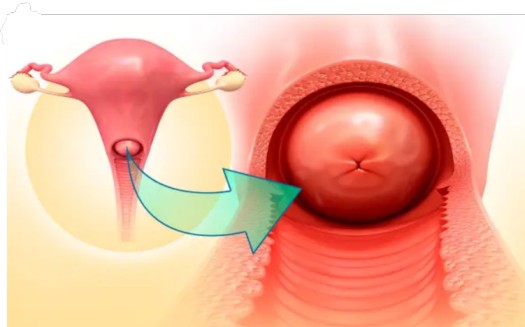
The Cervix
The cervix is a vital part of the female reproductive system, connecting the uterus to the vagina. It has two main types of cells:
- Squamous cells: Flat, thin cells found in the outer layer of the cervix (ectocervix).
- Glandular cells: Column-shaped cells that produce cervical mucus and are found in the cervical canal (endocervix).
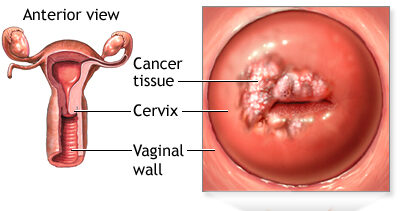
Cervical Cancer
Cervical cancer is a malignant tumor found in the tissues of the cervix, occurring when abnormal cells in the cervix turn into cancer cells. These cancer cells can invade the surface cells (epithelium) and the underlying tissue (stroma) of the cervix, most commonly beginning in the transformation zone.
Epidemiology
- Around 3,100 women are diagnosed with cervical cancer each year in the UK.
- In Australia, about 780 women are diagnosed annually.
- In Uganda, 2,464 women die from cervical cancer annually, with over 3,577 new cases diagnosed each year, making it a leading cause of death among women in the country.
Types of Cervical Cancer
- Squamous cell carcinoma: Begins in the flat, thin cells lining the bottom of the cervix; accounts for 80-90% of cervical cancers.
- Adenocarcinoma: Develops in the glandular cells lining the upper portion of the cervix; accounts for 10-20% of cervical cancers.
- Mixed carcinomas: Involve both types of cells.
Causes of Cervical Cancer
The exact cause is unknown, but several risk factors have been identified:
- Human papillomavirus (HPV): A major cause, with types 16 and 18 being the most oncogenic.
- Smoking: Chemicals in cigarette smoke can damage cervical cells.
- Immunosuppression: Conditions like HIV/AIDS weaken the immune system.
- Oral contraceptives: Long-term use increases risk, which decreases after stopping the pill.
- Other STIs: Infections like herpes and chlamydia can increase risk.
- Circumcision: Women with uncircumcised partners are at higher risk.
- Early sexual intercourse: Exposure to sperm can promote cell division in the transformation zone.
- High parity: Multiple pregnancies can cause cervical trauma.
- Repeated induced abortions: Can cause cervical trauma.
- Exposure to chemicals: Occupational exposure to substances like tetrachloroethylene.
Symptoms of Cervical Cancer
Early symptoms may not be noticeable but can include:
- Vaginal bleeding (between periods, after intercourse, post-menopausal)
- Unusual vaginal discharge (watery, pink, foul-smelling)
- Pelvic pain (during intercourse or otherwise)
Advanced stages can present with:
- Severe weight loss, anemia, dehydration
- Fatigue
- Back pain
- Pain or swelling in the legs
- Urinary or fecal incontinence
- Bone fractures
- Hematuria
- Enlarged organs
- Rectal bleeding
- Tenesmus (desire to defecate)
- Fistulas

Typing. . .

